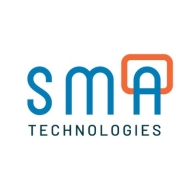

MuleSoft Anypoint Platform and OpCon compete in the enterprise integration and automation space. MuleSoft appears to have the advantage in API-driven integrations and hybrid cloud flexibility, whereas OpCon excels in automating repetitive tasks and job scheduling.
Features: MuleSoft Anypoint Platform provides a robust toolkit for API management, a wide range of connectors for various applications, and support for both cloud and on-premise deployments. User feedback highlights its stability and ease of use in managing APIs. OpCon focuses on job scheduling automation, integrates well with core systems, and offers efficient automation of manual processes. Features like Self Service enhance user capability and interaction.
Room for Improvement: MuleSoft could enhance its release cycle speed, responsiveness of technical support, and transparency in cost structure. There is also a need for simpler integrations for less technical users. OpCon could improve its user interface and expand integrations with third-party systems while enhancing visualization and error tracking capabilities.
Ease of Deployment and Customer Service: MuleSoft offers public, private, and hybrid cloud deployment options, providing flexibility. However, its customer support receives mixed reviews, with some users relying on community resources due to inconsistent support. OpCon, mainly an on-premise solution, is recognized for its solid customer support and dedicated partnerships, offering a more direct line of assistance.
Pricing and ROI: MuleSoft Anypoint Platform is often considered expensive, with complex licensing options based on volume and usage, posing a barrier for smaller organizations. OpCon is also faced with pricing concerns but is seen as more cost-effective due to its value in automating manual operations. Both platforms promise strong ROI, especially for enterprise-level deployments where the return is seen in streamlined operations and reduced manual work.


MuleSoft Anypoint Platform is used for integration and API management, connecting enterprise applications across retail, e-commerce, and supply chain. It supports cloud-to-cloud and cloud-to-on-premises scenarios with real-time and asynchronous messaging.
Users leverage MuleSoft Anypoint Platform for diverse integrations including cloud-based and on-premises, enabling data transformations, middleware functions, and hybrid integrations. It seamlessly connects systems like SAP, Salesforce, and Oracle, facilitating data transfers and integrating legacy systems. The platform offers a graphic interface, quick implementation, and a variety of connectors, contributing to its popularity for robust and scalable solutions. Despite its strengths, users seek better technical support, more connectors, simplified runtime management, and improved documentation.
What are the key features of MuleSoft Anypoint Platform?Enterprises in retail, e-commerce, and supply chain implement MuleSoft Anypoint Platform to connect various applications and systems. It supports real-time messaging for inventory management, synchronizes customer data across platforms, and integrates with legacy systems for smooth data migration. Users benefit from quick deployments and a marketplace that accelerates integration projects.
OpCon automates batch processing, core system operations, file transfers, and daily processing. Integrated across Unisys, Windows, and cloud systems, OpCon is used in financial institutions, credit unions, and multi-platform environments for job scheduling, report generation, SQL queries, scripting, and FTP processes, handling thousands of jobs daily.
Users value OpCon for comprehensive automation capabilities, particularly the scheduling feature that allows advance planning and streamlined workflows. The self-service functionality enables non-IT staff to manage tasks efficiently. OpCon's integration with core banking systems, robust job management, and error notification system significantly improve operational efficiency. Features like Solution Manager enhance accessibility and control, ensuring process continuity and ease of use.
What are the Key Features of OpCon?
What Benefits Should You Look for in Reviews?
Users find OpCon complex with a steep learning curve. Desired improvements include better separation of environments, enhanced graphical display, finer user authorization, simpler notification and alerts, more templates, increased web functionality, seamless interface, integration tools, online training, smoother scheduling, better reporting, mobile accessibility, smarter self-service, improved mainframe support, and integration with third-party systems. Pricing model and licensing could be more streamlined.
In financial institutions and credit unions, OpCon is implemented to handle thousands of daily jobs, automate internal processes, and integrate workflows across various platforms. It ensures secure file transfers, generates detailed reports, executes SQL queries, and supports seamless third-party integrations.
We monitor all Workload Automation reviews to prevent fraudulent reviews and keep review quality high. We do not post reviews by company employees or direct competitors. We validate each review for authenticity via cross-reference with LinkedIn, and personal follow-up with the reviewer when necessary.